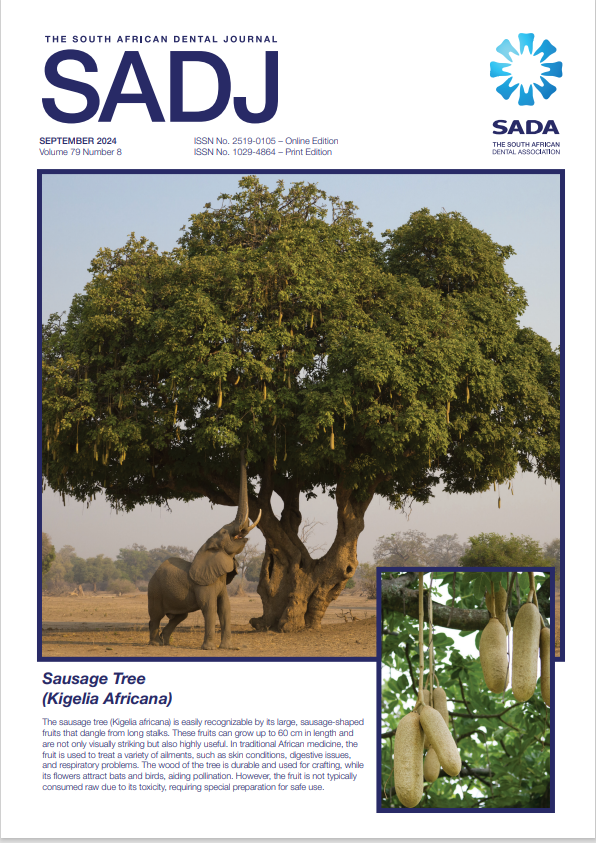What’s new for the clinician – summaries of recently published papers (September 2024)
DOI:
https://doi.org/10.17159/Keywords:
retention, lingual and buccal GIAbstract
The retention phase after orthodontic treatment is important to obtain stable results.1 Some degree of relapse after
treatment can occur, since teeth have a tendency to return towards their original positions. Studies have shown that that the design of the retainer can influence both gingival health and the tendency for relapse. For instance, multistrand wire retainers are associated with better alignment retention but may also lead to higher plaque accumulation and gingival irritation compared to single-span retainers. Many types of orthodontic retainers are used after orthodontic treatment including removable (acrylic retainers, vacuum-formed retainers) and fixed bonded retainers. The two most used fixed retainers are the thick (0.025 to 0.032 inch) stainless steel wire bonded solely to the canines and the thin (0.0175 or 0.0215 inch) multistranded wire bonded to the incisors and canines. The latter type is the most preferred fixed retainers as these are bonded to every tooth in the labial segment.1
Downloads
References
1. Al-Nimri K, Al-Qaqaa S. Gingival health and relapse tendency: a split mouth randomized controlled trial of two positions of lower fixed retainers. Clinical Oral Investigations. 2024 Aug 1;28(8):462
2. Gumy FN, da Silva KL, Gumy MN, Forville H, Cordeiro DC, Favoreto MW, Loguercio AD, Reis A. The decomposition rate and bleaching efficacy of in-office bleaching gels with different pHs: a randomized controlled trial. Clinical Oral Investigations. 2024 Aug;28(8):1-3
Downloads
Published
Issue
Section
License

This work is licensed under a Creative Commons Attribution-NonCommercial 4.0 International License.





.png)